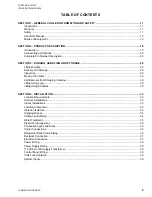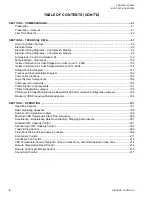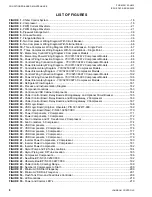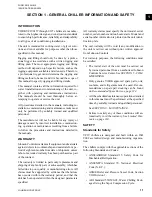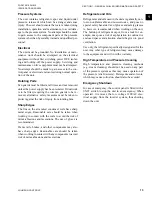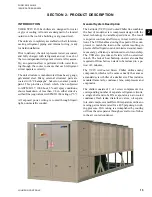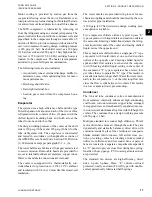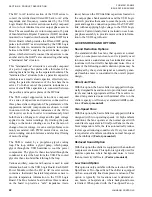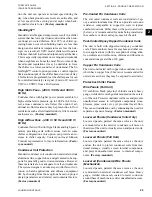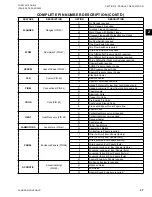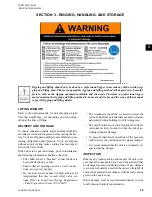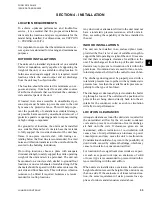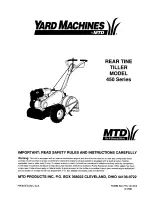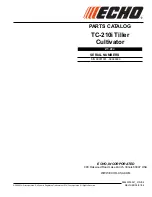
JOHNSON CONTROLS
18
FORM 201.23-NM2
ISSUE DATE: 09/25/2020
SECTION 2 - PRODUCT DESCRIPTION
Flash Tank Feed Valve/Drain Valves
A flash tank is fitted to both refrigerant circuits. The
flash tank is a shell type refrigerant reservoir designed
to sustain 2 phase refrigerant. The purpose of the flash
tank is to increase the efficiency of the system. A por-
tion of the liquid fed into the flash tank gases off, cool-
ing the remaining liquid in the tank another 25°F to
35°F. Both liquid and gas exist in the flash tank. The
refrigerant gas in the flash tank is fed to the econo-
mizer port on the compressor at a point on the rotors
approximately 1.7 x suction when the economizer so-
lenoid is activated. The liquid in the tank is fed to the
evaporator.
The vapor feed to the economizer port of the compres-
sor is at an intermediate pressure between discharge
and suction (1.7 x suction) and therefore little energy
is required to pump it back through the compressor to
condenser pressure. This results in a very small loss to
system efficiency.
The design working pressure of the flash tank is 450
psig (31 bar). The Drain and Feed Valves on the flash
tank are activated on start-up. The Feed Valve on the
flash tank acts like a liquid line solenoid, but also func-
tions to control the liquid level in the flash tank. The
Drain Valve functions similar to an electronic expan-
sion valve (EEV). The Drain Valve controls refriger-
ant flow to the evaporator based on suction superheat.
Both valves are stepper motor valves. An economizer
solenoid is placed between the flash tank and the econ-
omizer port of the compressor. The economizer sole-
noid valve is generally activated at speeds above 90 Hz
to 120 Hz, depending upon a number of other factors.
Both valves are controlled by 2 phase drive signals
from a stand-alone controller in the Control. Signals
from sensors such as suction pressure and tempera-
ture are sent to the Chiller Control Board, which in
turn sends control signals to the Drain and Feed Valve
Controller. The control algorithm in the Chiller Con-
trol Board will attempt to control the liquid level in the
flash tank to 35% on the level sensor and the system
will fault if the flash tank level exceeds 87.5%.
During operation, it will be noted the flash tank level
will typically remain between 30-40% level when the
economizer solenoid is ON. The economizer solenoid
valve will typically be on most of the time. When the
economizer solenoid is OFF, the liquid level will vary
greatly as the Drain and Feed Valves directly affect the
level as they open and close.
Oil Separator/Oil System
The external oil separators, with no moving parts and
designed for minimum oil carry-over, are mounted in
the discharge line of the compressor. The high pressure
discharge gas is forced around a 90 degree bend. Oil is
forced to the outside of the separator through centrifu-
gal action and captured on wire mesh where it drains to
the bottom of the oil separator and is then forced into
the condenser.
The oil (YORK “L” oil – a POE oil used for all re-
frigerant applications), flows from the oil separator,
through the condenser where it is cooled, and back into
the compressor through a replaceable 0.5 micron oil
filter at high pressure. This high pressure “oil injec-
tion” forces the oil into the compressor, where it is fed
to the bearings and rotors for lubrication. After lubri-
cating the bearings, it is injected through orifices on a
closed thread near the suction end of the rotors. The oil
is automatically injected because of the pressure differ-
ence between the discharge pressure and the reduced
pressure at the suction end of the rotors. This lubricates
the rotors as well as provides an oil seal against leak-
age around the rotors to ensure refrigerant compression
efficiency.
The oil also provides cooling by transferring much of
the heat of compression from the gas to the oil, keeping
discharge temperatures down and reducing the chance
for oil breakdown. Oil injected into the rotor cage
flows into the rotors at a point about 1.2 x suction. This
ensures that a required minimum differential of at least
30 PSID exists between discharge and 1.2 x suction, to
force oil into the rotor case. A minimum of 10 psid (0.6
bar) is all that is required to ensure protection of the
compressor. The oil pressure safety is monitored as the
difference between suction pressure and the pressure of
the oil entering the rotor case.
Maximum working pressure of the oil separator is 450
psig (31 bar). Oil level should be above the midpoint
of the “lower” oil sight glass when the compressor is
running. Oil level should not be above the top of the
“upper” sight glass.
Relief Valves
Two relief valves are installed in each refrigerant cir-
cuit. A 325 psig relief valve is located on each flash
tank and a 250 psig relief valve is located on the suc-
tion line of the compressor near the evaporator.
Содержание YCIV Series
Страница 14: ...JOHNSON CONTROLS 14 FORM 201 23 NM2 ISSUE DATE 09 25 2020 THIS PAGE INTENTIONALLY LEFT BLANK...
Страница 32: ...JOHNSON CONTROLS 32 FORM 201 23 NM2 ISSUE DATE 09 25 2020 THIS PAGE INTENTIONALLY LEFT BLANK...
Страница 40: ...JOHNSON CONTROLS 40 FORM 201 23 NM2 ISSUE DATE 09 25 2020 THIS PAGE INTENTIONALLY LEFT BLANK...
Страница 50: ...JOHNSON CONTROLS 50 FORM 201 23 NM2 ISSUE DATE 09 25 2020 THIS PAGE INTENTIONALLY LEFT BLANK...
Страница 105: ...JOHNSON CONTROLS 105 SECTION 6 TECHNICAL DATA FORM 201 23 NM2 ISSUE DATE 09 25 2020 THIS PAGE INTENTIONALLY LEFT BLANK...
Страница 325: ...JOHNSON CONTROLS 325 FORM 201 23 NM2 ISSUE DATE 09 25 2020 NOTES...


